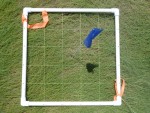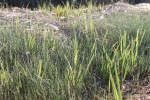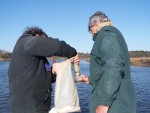A comprehensive site “field guide” can be a useful way of keeping track of all the organisms identified at a Long Term Ecological Research (LTER) site and an important resource for students and new investigators. Moreover, a guide targeted at the more visible plants and animals can help engage the public in LTER research. It can help spark the visitor’s interest in the site and allows the public (and students) to learn about the plants and animals in their back yard.
However, creating any field guide of a study site, much less several guides aimed at different audiences, may be a difficult task for busy scientists. Jumbles of questions arise, including where to find the information and pictures and how to make it accessible and attractive to the public. Let's face it: not all scientists are writers or artists.
When the Plum Island Ecosystem (PIE) LTER team was challenged to make a field guide to the Plum Island marshes, we decided to use the Encyclopedia of Life (EOL) and the expertise of its programmers. EOL is a joint venture of a number of institutions, including our home institution, the Marine Biological Laboratory, and its mission is to provide information and pictures of all species known to science.
Anyone can visit the EOL website to learn about the organisms found on Earth. The great thing about EOL is how multifaceted it is. Not only can you search for a single species or taxon and gain a wealth of information, but you can also visit the “Field Guides” section and view guides created by groups of people or scientists anywhere in the world.
Creating a guide for your study site is easy. After building a profile, the website creates a template for you to work from, including a title, map, space to write about your field site and the list of species. Great tools in the editing stage allow you to edit what information or pictures are shown in your field guide, either on the homepage or on each individual species’ page. Once you are satisfied with your field guide, you publish it to the general public and can advertise it on your homepage. A site could have several guides; for example, one extremely comprehensive field guide and then create small guides targeted for specific outreach or educational activities.
We found that the EOL Field Guides provided the tools that best fit our needs and time limitations. You can check out our new field guide at http://fieldguides.eol.org/fguides/fieldguide-view.php?guidekey=715.

 Enlarge this image
Enlarge this image


